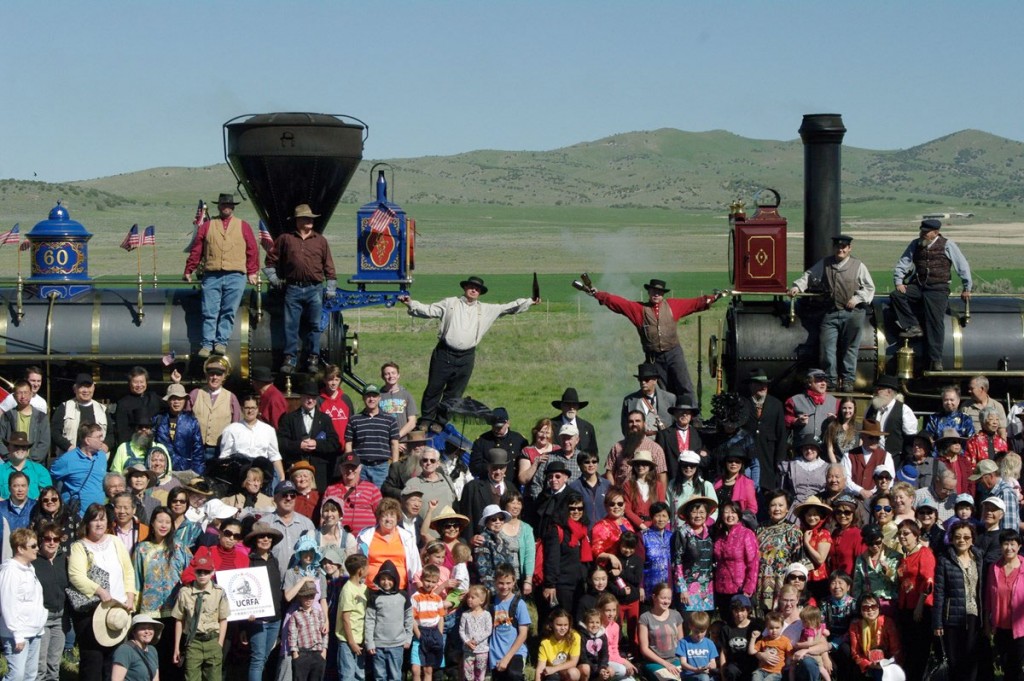Notes contributions of diverse workforce, especially 12,000 or more workers of Chinese heritage who made the Transcontinental Railroad possible
PROMONTORY SUMMIT, UTAH – U.S. Secretary of Transportation Elaine L. Chao today gave a keynote address at the 150th Anniversary of the Golden Spike Ceremony, marking the completion of the first American Transcontinental Railroad. She attended the ceremony to commemorate the contributions that railroads and railroad workers — especially Chinese laborers — have made to the economic transformation of our country brought about by the transcontinental railroad.

“The transcontinental railroad was a tremendous feat of engineering, innovation and manpower that was key to the economic development of the United States, and today, we pay special tribute to the diverse workforce — especially 12,000 or more Chinese laborers — that built this seminal infrastructure project that transformed America,” said Secretary Chao. As the first Asian Pacific American woman ever appointed to the President’s cabinet, and the first American of Chinese ancestry to serve as U.S. Secretary of Transportation, Secretary Chao is uniquely positioned to commemorate the contributions that Chinese workers made to the building of one of the greatest infrastructure projects in American history — the Transcontinental Railroad.
Building from the East, the Union Pacific hired many Irish immigrants to lay track across the Great Plains. Building from the West, the Central Pacific Railroad hired 15,000 workers, most of whom were Chinese laborers. The workers of Chinese ancestry blasted and chiseled their way through the rugged Sierra Nevada mountains. Using manual hammer drills, pickaxes and explosives, they dug 15 tunnels through hard granite. Snow fell so deeply in the mountains that they had to build roofs over 37 miles of track so supply trains could make it through. The conditions were merciless, dangerous and harsh. An estimated 500-1,000 Chinese workers lost their lives. The contributions of the Chinese workers are especially poignant because they could not bring their families with them nor obtain American citizenship.

The Secretary’s address today, at the 150th Anniversary of the Golden Spike, was a historic acknowledgement honoring the achievement and sacrifice of the Chinese workers.
Promontory Summit in Utah was the site of the first Golden Spike ceremony 150 years ago, which announced the completion of America’s first Transcontinental Railroad. Within three years of this event, trains could travel from New York City to San Francisco in just one week. Prior to the completion of the railroad, travelers spent up to six arduous months traveling by ship or covered wagon, often enduring great dangers at great cost.
The ability to move people and goods across the continent more rapidly and at much lower cost led to rapid economic growth. The benefits were not only felt in the cities on the coasts, but in communities in the interior, which gained access to new markets. Within ten years of completion, the intercontinental railways were shipping $50 million of freight from coast to coast each year.
In addition to Secretary Chao, other distinguished guests at the 150th anniversary commemoration included Utah Governor Gary Herbert; U.S. Secretary of the Interior David Bernhardt; Utah Lieutenant Governor Spencer J. Cox; U.S. Senator Mitt Romney (R-Utah); U.S. Senator Mike Lee (R-Utah); former U.S. Senator Orrin Hatch (R-Utah); U.S. Congressman Rob Bishop; and, representatives of the many immigrant groups that worked on the project.
The Golden Spike was the 17.6 karat final spike driven in to join the Central Pacific and Union Pacific railroads, creating the Transcontinental Railroad. It connected the eastern U.S. rail network with the San Francisco Bay via Council Bluffs, Iowa, and Omaha, Nebraska.









